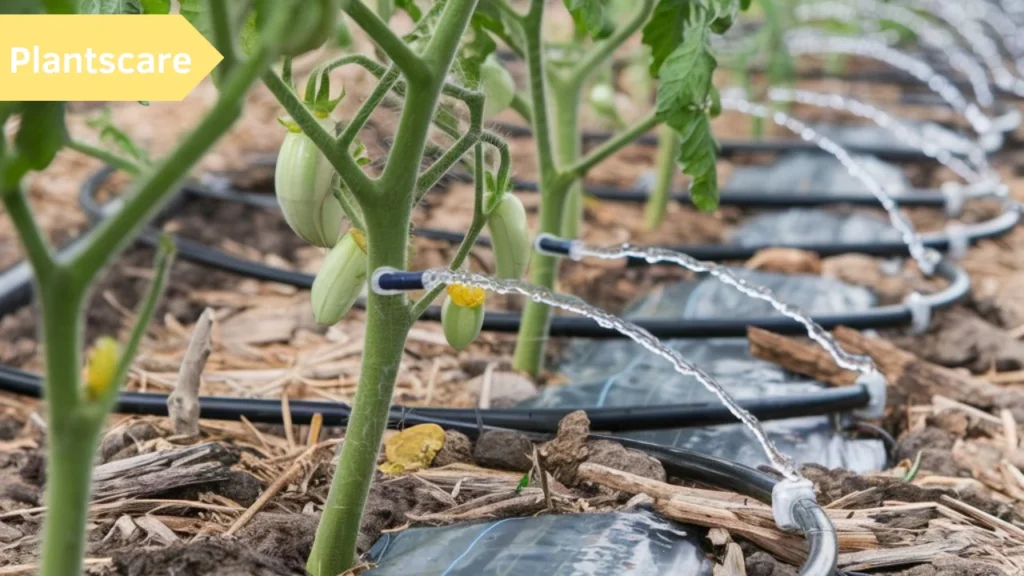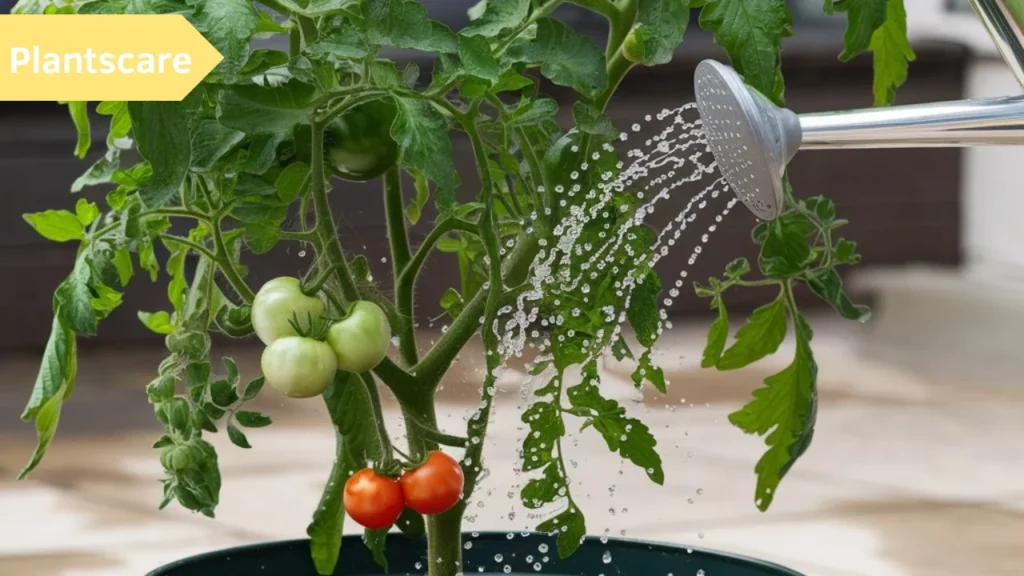Growing healthy, delicious tomatoes can be an art, and proper watering is a huge part of it. Knowing when and “How Often Do You Water Tomato Plants?” can make all the difference between a fruitful harvest and a disappointing crop. Let’s dive into the details!
The Role of Watering in Tomato Plant Growth
Water is essential for all plants, but for tomatoes, it’s particularly critical. Tomatoes require a regular level of moisture to thrive. Too much or too little water can lead to various issues such as root rot, wilting, or even fruit splitting.
Factors Affecting Watering Frequency
Weather Conditions
The weather has a direct impact on how often you should water tomato plants. In hotter climates, plants will need more frequent watering, especially if they are exposed to direct sunlight for most of the day.
Type of Soil
Sandy soils drain water quickly, meaning you may need to water your plants more frequently. In contrast, clay soils hold moisture longer but can lead to waterlogging if you overwater.
Stage of Growth
The amount of water needed also depends on the stage of the tomato plant’s growth. Seedlings, for instance, require less water than mature plants, but they need to be kept consistently moist.
How Much Water Do Tomato Plants Need?
Measuring Water Quantity
Generally, tomato plants need 1 to 1.5 inches of water per week. This can be stretched out over several days or done all at once You can use a rain gauge to monitor how much water your plants are getting if they’re outdoors.
Signs of Underwatering vs. Overwatering
An underwatered tomato plant will have dry, curled leaves, while overwatered plants may display yellowing leaves and a soggy base. Knowing these signs helps you adjust your watering schedule.
Watering Tomato Plants at Different Growth Stages
Watering Seedlings
Seedlings need frequent but light watering. The soil should be kept damp, but not saturated. Watering every 2-3 days should suffice, depending on the weather and soil type.
Watering Mature Tomato Plants
Once your tomato plants are established, they can handle a bit more water at a time, but make sure it soaks deeply into the soil to encourage strong root growth. Watering once or twice a week is generally plenty.
Watering During Flowering and Fruiting
During the flowering and fruiting periods, the water requirements increase. However, avoid watering too often as it can cause the fruit to split or develop blossom end rot.

Best Time of Day to Water Tomato Plants
Morning vs. Evening Watering
The ideal time to water tomato plants is early in the morning. This allows the plant to absorb moisture before the sun is at its strongest, reducing water loss from evaporation.
Avoiding Midday Watering
Watering during the heat of the day can cause water to evaporate too quickly and may even scald the leaves. If you can’t water in the morning, late afternoon or early evening is your next best option.
Techniques for Watering Tomato Plants
Drip Irrigation
Drip irrigation is one of the most efficient ways to water tomato plants. It delivers water directly to the roots, minimizing evaporation and ensuring the plants get exactly what they need.
Soaker Hoses
Soaker hoses work similarly to drip irrigation but are less expensive. They allow water to seep out slowly along the length of the hose, making it perfect for garden beds.
Hand Watering
Hand watering is an option, especially for smaller gardens. Just be sure to water deeply to promote healthy root development.
Watering Tomato Plants in Containers vs. Garden Beds
Special Considerations for Potted Plants
Tomato plants in containers dry out more quickly than those in garden beds. They may need to be watered daily, especially during hot, dry periods.
Maintaining Moisture in Garden Beds
For garden beds, mulching can help retain moisture in the soil, reducing the frequency of watering. This also helps keep the roots cool during hot weather.

Common Mistakes to Avoid When Watering Tomato Plants
Overwatering
Overwatering can lead to root rot and other problems. Always check the soil before watering to ensure it needs more moisture.
Inconsistent Watering
Inconsistent watering can cause stress to tomato plants, leading to problems like blossom end rot or fruit splitting. Try to maintain a regular schedule.
How to Improve Soil for Better Water Retention
Mulching
Mulching with organic materials like straw or wood chips helps retain moisture in the soil and suppresses weeds.
Adding Organic Matter
Incorporating compost or other organic matter into the soil improves its structure, allowing it to hold more water without becoming waterlogged.
Conclusion:
Watering tomato plants might seem like a simple task, but it requires careful attention. The key is to provide enough moisture to promote healthy growth while avoiding common pitfalls like overwatering or inconsistent watering. Your plant’s needs and monitoring the conditions, you can achieve a bountiful tomato harvest.
FAQs
How often should I water my tomato plants in hot weather?
In hot weather, you may need to water your tomato plants daily, especially if they are in containers or sandy soil.
Can I water tomato plants from above?
It’s better to water at the base of the plant to avoid wetting the leaves, which can encourage diseases like blight.
What are the signs of underwatered tomato plants?
Underwatered plants will have dry, wilting leaves, and the soil will feel dry to the touch.
How can I tell if I’m overwatering my tomato plants?
Yellowing leaves and a soggy base are common signs of overwatering. The soil may also feel overly wet.
Do tomato plants need more water in containers?
Yes, tomato plants in containers dry out faster and may need daily watering during hot weather.